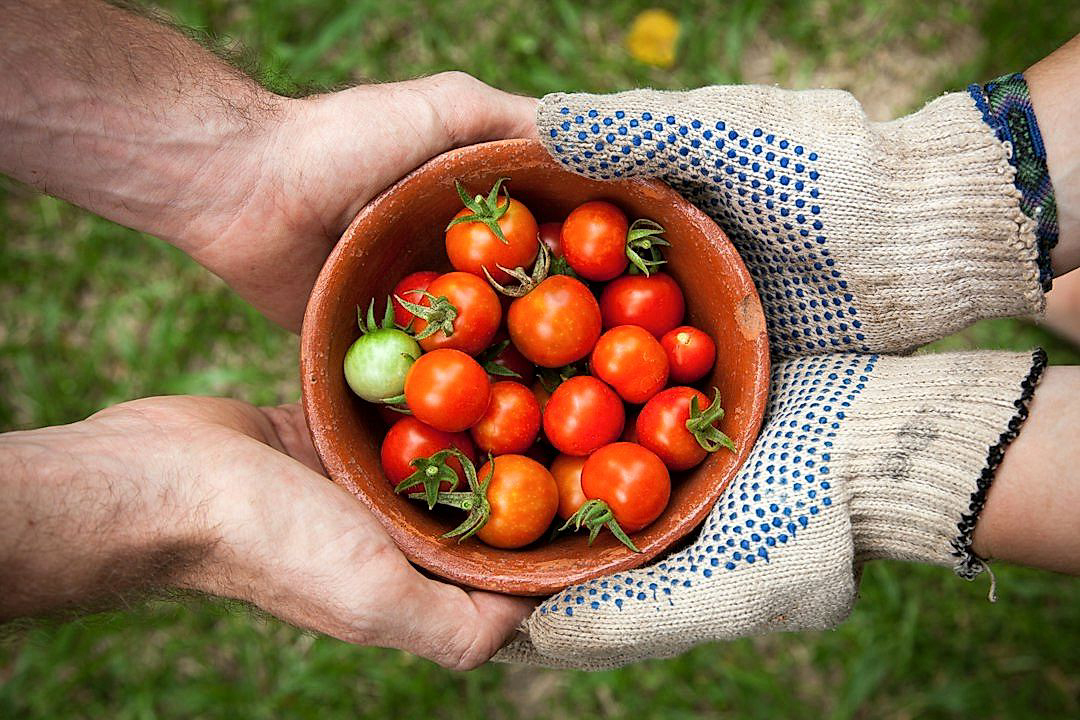As customers become increasingly knowledgeable about their food sources, retail enterprises need to stay ahead of the game.
One pressing challenge is ensuring a steady supply of fresh produce all-year-round.
This requires a fine-tuned strategy that considers the vast complexities of seasonal sourcing.
Whether you’re an independent grocer, a nationwide chain, or a restaurant-owner, adapting to the rhythms of nature can be daunting, but is vital.
In this discussion, we delve into the innovative strategies to smoothen this process.
You’ll find the practical insights below useful in aligning your sourcing to the natural cycle of abundance and scarcity.
Seasonal Sourcing Strategies For Produce Retail
1. Stock local fruits during peak harvesting seasons
One of the most crucial aspects is aligning your inventory with the seasons around you.
This not only helps in maintaining the freshness of your produce but also gives you the advantage of offering variety throughout the year.
Local fruits are typically abundant during their respective peak harvesting seasons, and this is the best time to stock them.
Doing so can greatly reduce cost implications on your business as the supply is high and prices are usually lower.
On top of that, stocking local fruits during peak seasons ensures that the quality of the produce is at its best, and this is something your customers will appreciate.
Moreover, this move can significantly minimize shipping and packaging costs if you run a retail store that supports local farmers.
These fruits, harvested at their peak, offer maximum flavor and nutritional content, which can attract a good number of health-conscious customers to your store.
By stocking these fruits in large quantities, you assist in promoting local agriculture and fostering a sense of community among your customers.
Showing your customers that you value locally sourced fruits and vegetables can give your business a unique selling point.
Furthermore, peak fruit seasons are great opportunities for promotional campaigns.
You could offer discounts on these fresh, local fruits which could draw more customers and increase your sales.
Prioritizing locally grown, seasonal fruits in your inventory not only makes business sense but is also a more environmentally sustainable approach.
With lower shipping distances, the carbon footprint associated with transporting the produce is also significantly reduced.
Investing in local fruits during their peak harvesting seasons could ultimately improve your store’s reputation, profitability, and contribution to the local community and environment.
Remember, a successful retail business knows when to adapt to changes and take full advantage of the opportunities presented by varying seasons and harvest times.
Fruit seasons are nature’s way of telling us what to eat and when to eat it, and as a produce retailer, you can help convey this natural schedule to your customers.
2. Partner with Local Farmers for Fresh Supply
Establishing relationships and partnering with local farmers is a crucial element to adopt as part of your seasonal sourcing strategies.
Given the increasing consumer demand for locally-sourced fresh produce, this approach ensures that your retail store is always stocked with high-quality, ripe fruits and vegetables.
Working closely with local farmers will not only guarantee a constant supply of fresh produce but also foster community connections and promote sustainability.
Furthermore, collaborations with local farmers can provide you with firsthand knowledge about the products you’re selling, from understanding the cultivation process to knowing precise harvesting seasons.
As a produce retailer, this partnership will enable you to give customers accurate info about the produce they are buying, improving their shopping experience and building trust.
Your relationship with farmers also allows you to plan ahead and adjust your inventory based on the information they provide about the upcoming harvest.
Additionally, this partnership can lead to exclusivity – where your store becomes the sole retailer of a specific farm’s produce – distinguishing your retailer brand in a competitive market.
Partnering with local farmers can also create opportunities for displaying and marketing fresh and enticing produce, enhancing the aesthetics of your store and the appeal to customers.
Moreover, these alliances allow for direct and prompt delivery from the farm to your store, ensuring the freshness and reducing potential for waste associated with long supply chains.
It’s also important to consider diversifying your partnerships to include a variety of farmers- this broadens the range of produce you offer and helps cater to a wide array of customer demand.
Engaging and supporting local farmers contributes to the local economy’s growth and nurtures community goodwill towards your retail store.
In turn, the increased sales and returning customers that result from this approach contribute to the profitability and sustainability of your retail business over time.
Lastly, as an added benefit, collaborations with local farmers can provide opportunities for promotional initiatives, like farmer visits and taste-testing events, which increase customer engagement as well as awareness of local produce.
While the initial effort and investment to cultivate these relationships might seem daunting, the payoff in terms of increased sales, customer satisfaction, and community support will be well worth the investment.
Therefore, a commitment to partnering with local farmers should be a cornerstone for seasonal sourcing strategies for any successful produce retail business.
3. Promote seasonal produce with sales and discounts
Promoting seasonal produce not only helps move produce faster but also lets customers take advantage of peak quality and taste.
One way to achieve this is through sales and discounts.
Strategically timing these promotions can optimize sales volume and profit margins.
For example, you can offer discounts when a particular fruit or vegetable is abundant and cheap to procure.
Conversely, you can scale back discounts when supply is low, thus preserving your profit margins.
Carefully staggering these promotions throughout the financial year can also help to smooth out revenue fluctuations.
Ultimately, the goal here is to nudge customers towards making healthy, locally-sourced and environmentally sensible choices.
Therefore, it is crucial to communicate effectively with your customer base so they fully understand the benefits of buying seasonal produce.
Perhaps you can craft a narrative around the journey of their food from farm to plate to add an element of relatability and transparency.
Highlighting the freshness and sustainability factors can be a powerful draw for eco-conscious consumers.
Additionally, you can consider partnering with local farms for product demonstrations or putting up recipe suggestions to add a touch of inspiration.
Whatever your approach, remember that the ultimate goal is to enhance the customer experience and drive loyalty.
A loyal customer is more likely to accept slightly higher prices due to the guaranteed quality and become an advocate for your store within their network.
Remember, such advocacies lead to more organic growth and thus, a better return on investment.
Also, to facilitate these promotional activities, having a robust POS system in place is beneficial.
This system should allow tracking of inventory and sales data, supporting you in making data-driven decisions on when to line up discounts and deals.
On the whole, while sales and discounts are effective promotional tools, you should also explore various other ways to engage your customers and differentiate yourself from competitors.
4. Pre-order winter produce in warmer months
Planning for the colder months in the height of summer might seem counterintuitive, but it’s a crucial part of maintaining a continuous supply of in-demand produce.
This approach allows you to stay ahead of the curve, ensuring that you have a steady supply of fresh fruits and vegetables during the colder months.
The key to this strategy is understanding the growing and harvesting calendar of different regions.
Many vegetables and fruits harvested in warmer climates during summer and early fall have a long shelf life and can be stored for consumption in the winter months.
While pre-ordering might seem risky due to unpredicted changes in demand, it offers an opportunity to secure volumes of popular winter produce, such as squash or root vegetables, at a competitive price.
It’s also good to remember that winter produce is not exclusive to root vegetables or hardy greens;
Tropical locations continue to produce certain fruits, like citrus and avocados, throughout the winter months, providing an opportunity for diversification in your winter inventory.
Partnering with vendors who operate in these warm climates helps to ensure the availability of a diverse product range all year round.
Additionally, pre-ordering allows you to take advantage of of the potential discounts offered by farmers and wholesalers for booking quantities in advance.
It serves as a predictable buffer, helping you manage your budget well in advance and avoid last-minute sourcing issues.
However, one must note that pre-ordering doesn’t translate to blind ordering.
It is essential to conduct a thorough assessment of previous sales data, predicting customer demand well in advance to make informed pre-ordering decisions.
Doing so ensures your stores aren’t stuck with unsold, spoiling produce, thereby minimizing waste and maximizing profits.
The pre-ordering process also gives you a chance to communicate and negotiate with your suppliers about the specific varieties of produce you will require and when you will need each delivery.
These discussions can provide insights into what’s selling well in other markets and bring innovative new produce options to your customers.
In summary, pre-ordering winter produce during warmer months is a strategic initiative that requires thorough planning, careful market study, and close collaboration with vendors and local farmers.
5. Align inventory with holiday-specific produce needs
Produce retail requires a strategic approach tailoring inventory to align with the demands of the different holidays throughout the year.
The produce market faces significant fluctuations corresponding with annual holidays and special celebrations, which why it is important to plan ahead.
Consumers have specific expectations for their holiday meals, and being able to offer the right fruits and vegetables at the right time can give your business a notable advantage.
Understanding consumer behavior and predictability in pattern related to holiday-specific needs is a key aspect of managing and aligning your inventory accordingly.
A well-aligned inventory can not only boost sales but also enhance customer satisfaction and loyalty.
For example, during Thanksgiving, demand for squashes, pumpkins, apples, cranberries, and other fall fruits and vegetables naturally soars.
Strategically stocking up on these items not only fulfills customer needs but also maximizes revenue for your business.
Fruits and vegetables that are associated with Christmas, Easter, and even certain national holidays where specific traditions require particular dishes are another consideration for your produce business.
By observing and understanding these trends, you can accurately forecast the demand and adjust your inventory accordingly.
It’s crucial to establish strong relationships with your suppliers to ensure you can secure the necessary produce to cater to these holiday-specific needs.
Of course, aligning your inventory doesn’t only mean offering the right produce, but also managing your stock levels to prevent overstocking or understocking situations.
This is where advanced tools like inventory management software prove beneficial, allowing real-time tracking of stock levels and providing predictive analytics for better planning.
Regular reviews and updates of your inventory practices ensure you remain aligned with the fluctuating market trends and can quickly adapt to unforeseen circumstances.
This way, you sustain a smooth business operation, successfully cater to the developing consumer needs and respond aptly to the varieties of holiday-specific produce demands.
Take note that being in tune with your market’s holiday trends not only gives you a strategic advantage but allows you to plan effective marketing and sales strategies, facilitating a strong retail performance throughout the year.
The Bottom Line
Through the strategical stocking of local fruits during their peak harvesting season, forming partnerships with local farmers for a steady supply, and promoting seasonal produce through sales and discounts, grocery retailers can actually optimize their strategies for their fresh produce section.
They can also pro-actively prepare for winter months by pre-ordering produce, allowing customers a wider range of selection throughout the year.
Moreover, aligning inventory with holiday-specific needs is crucial to meet the customer’s increased demand during specific times.
By implementing these measures, grocery retailers can ensure the freshness, variety, and appeal of their produce sections, ultimately leading to increased customer satisfaction and sales.




